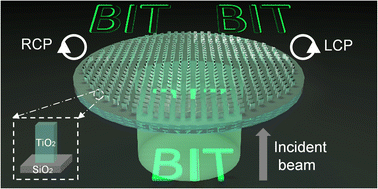Computing metasurface capable of broad-band switchable anisotropic edge-enhanced imaging†
Abstract
Anisotropic edge enhancement imaging along different directions possesses the capability to extract different morphological information from an object which plays a vital role in weak edge detection in imaging. Building a simple, miniature, switchable anisotropic edge enhancement imaging device is extremely absorbing. Here, we design a 2D material, i.e., a helicity-multiplexing dielectric metasurface for anisotropic edge-enhanced imaging. More importantly, this 2D material is prioritized to satisfy two sets of unrelated phase profiles, relying on different helicities of the incident beam. It can function as two different anisotropic edge enhancement filters along different directions by incorporating the 4f imaging system and dynamically switching its function by altering the helicity of the incident beam. Furthermore, a hybrid imaging device based on this 2D material can work across a visible broadband spectrum, which is potentially applicable in biomedical imaging and optical analog computing.

- This article is part of the themed collections: 1D/2D materials for energy, medicine, and devices and 2023 Journal of Materials Chemistry C HOT Papers


 Please wait while we load your content...
Please wait while we load your content...